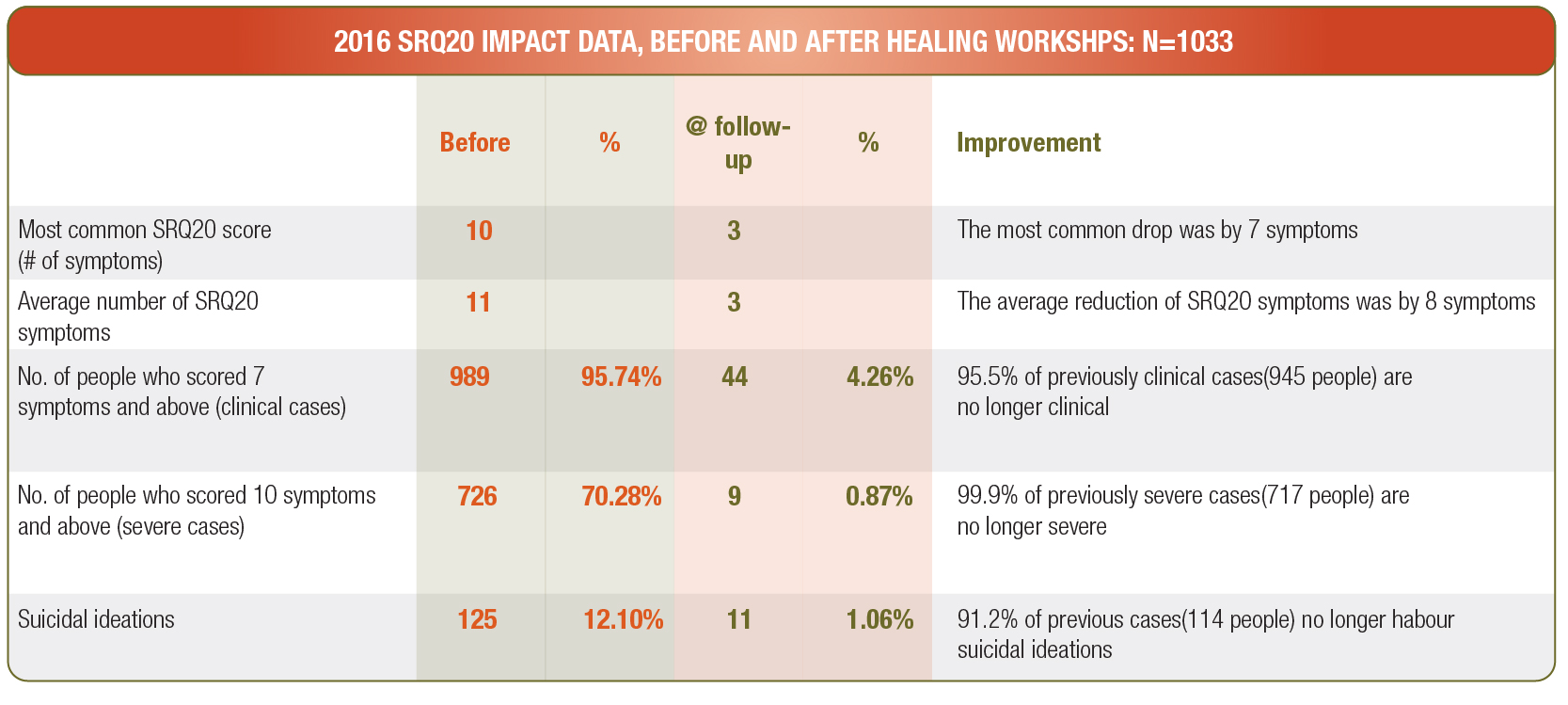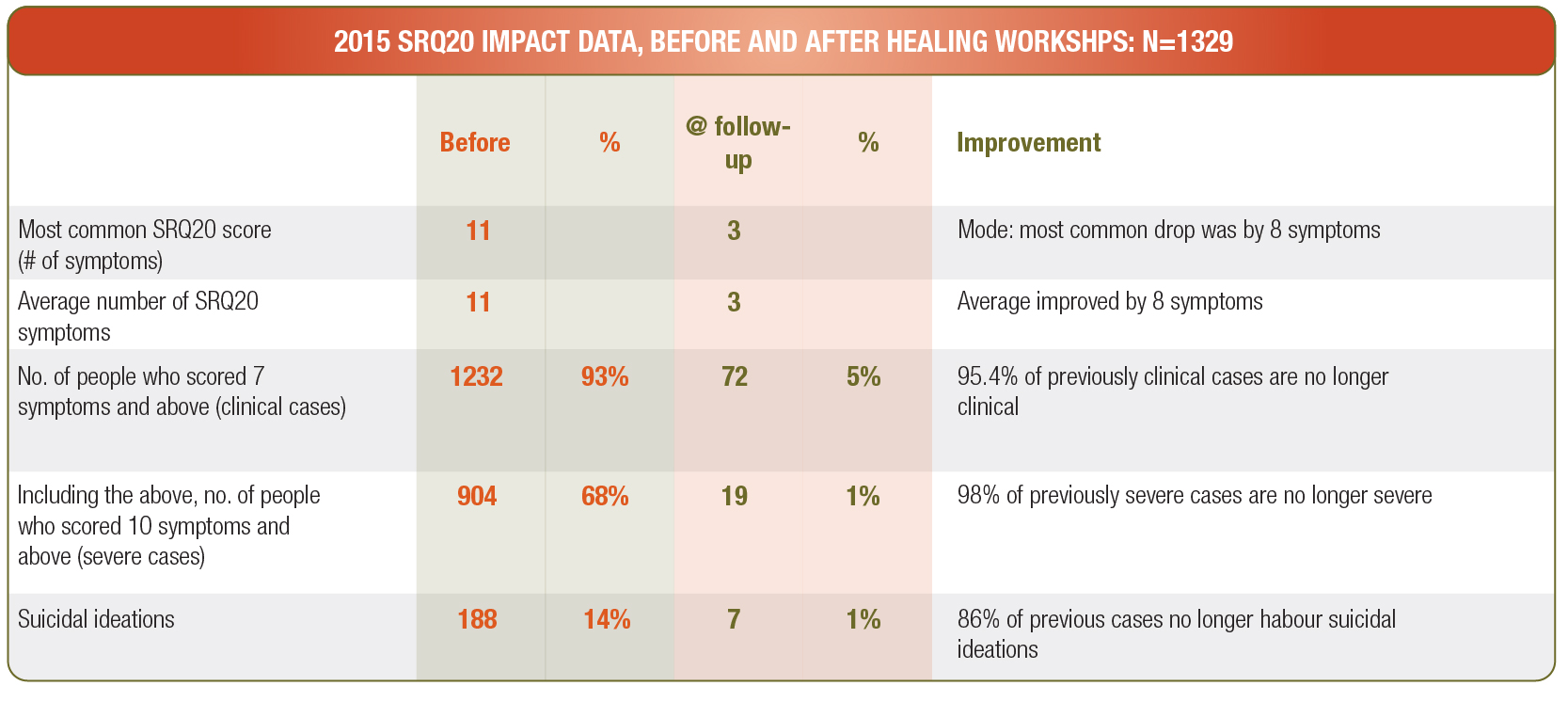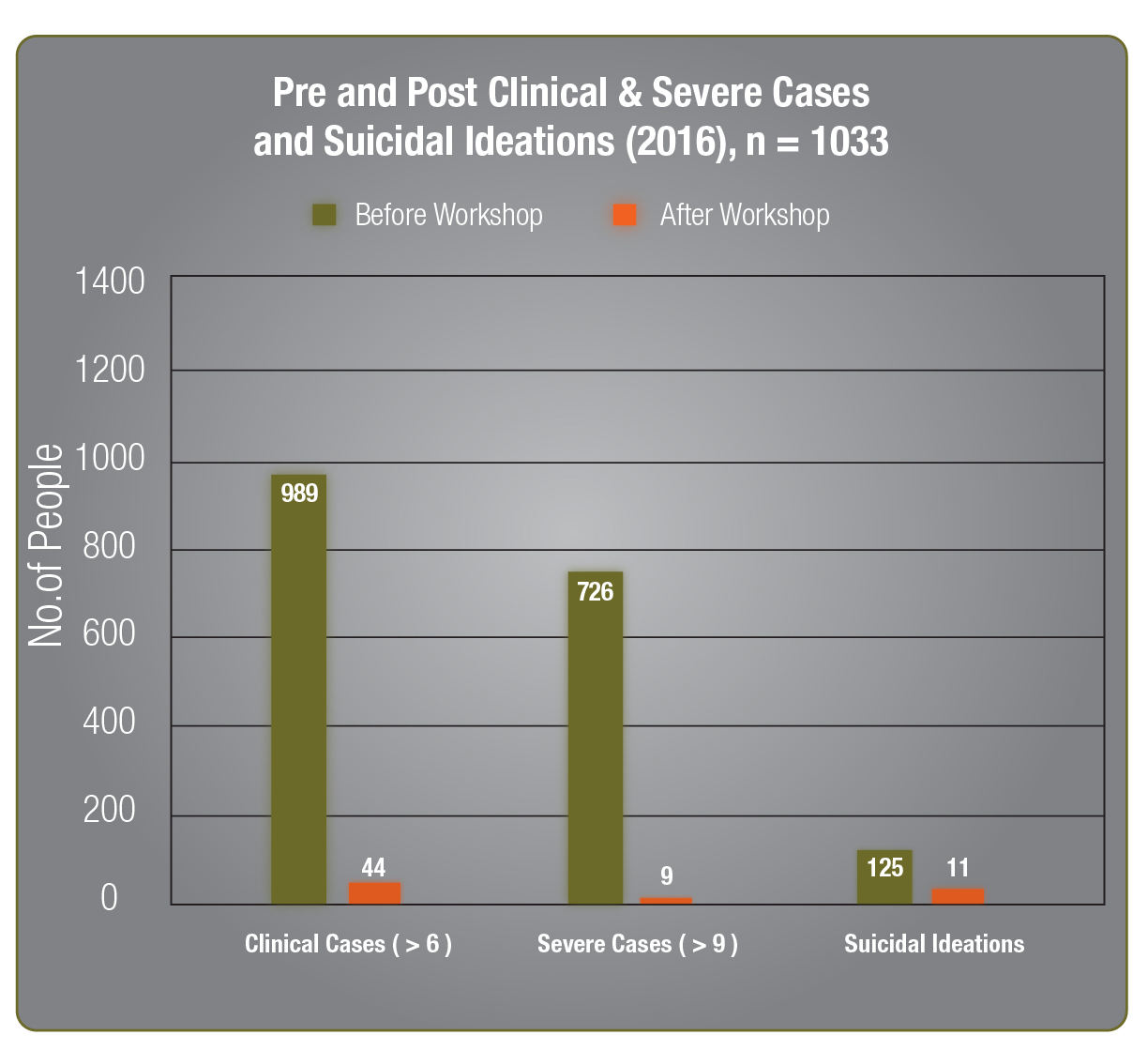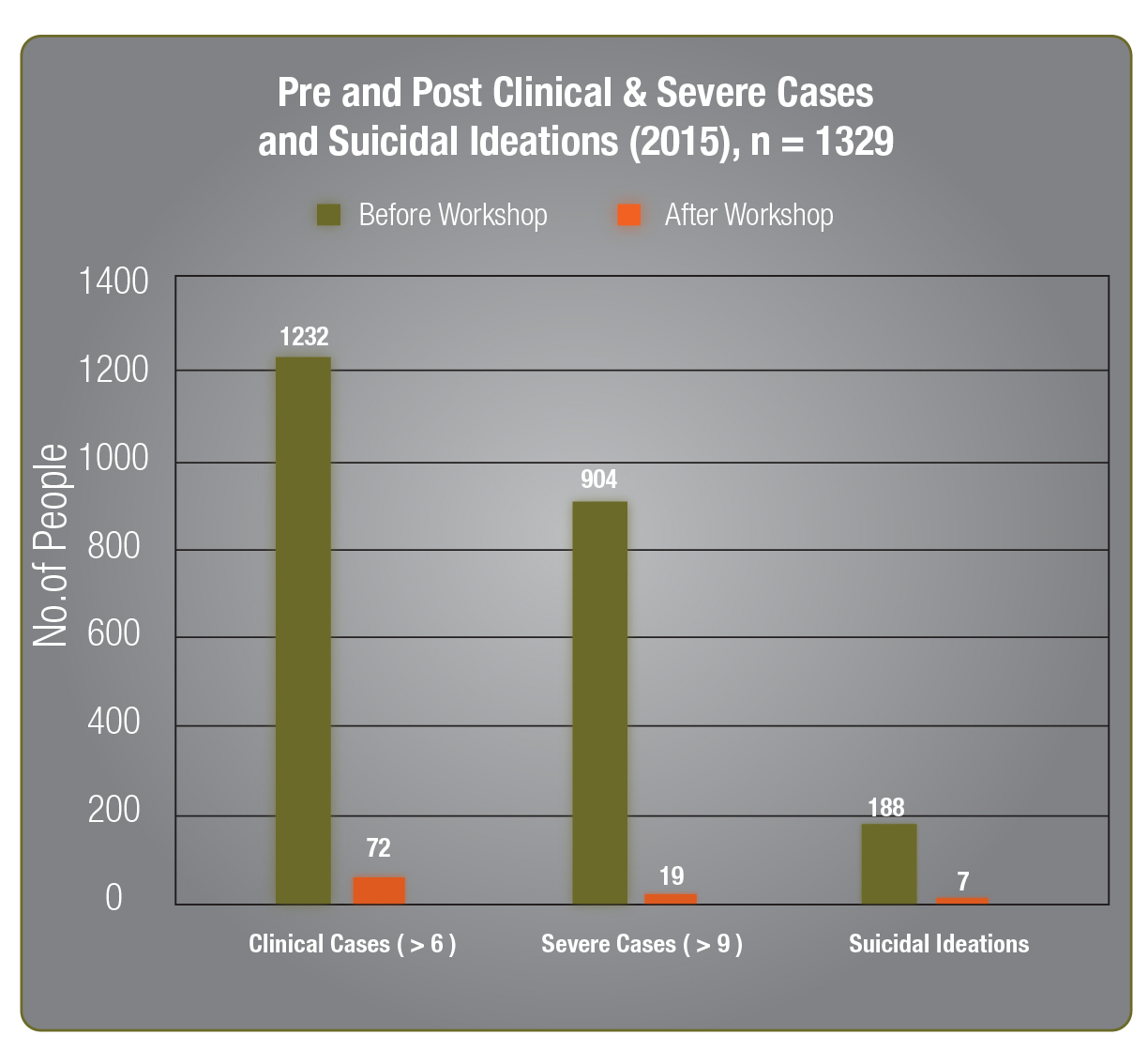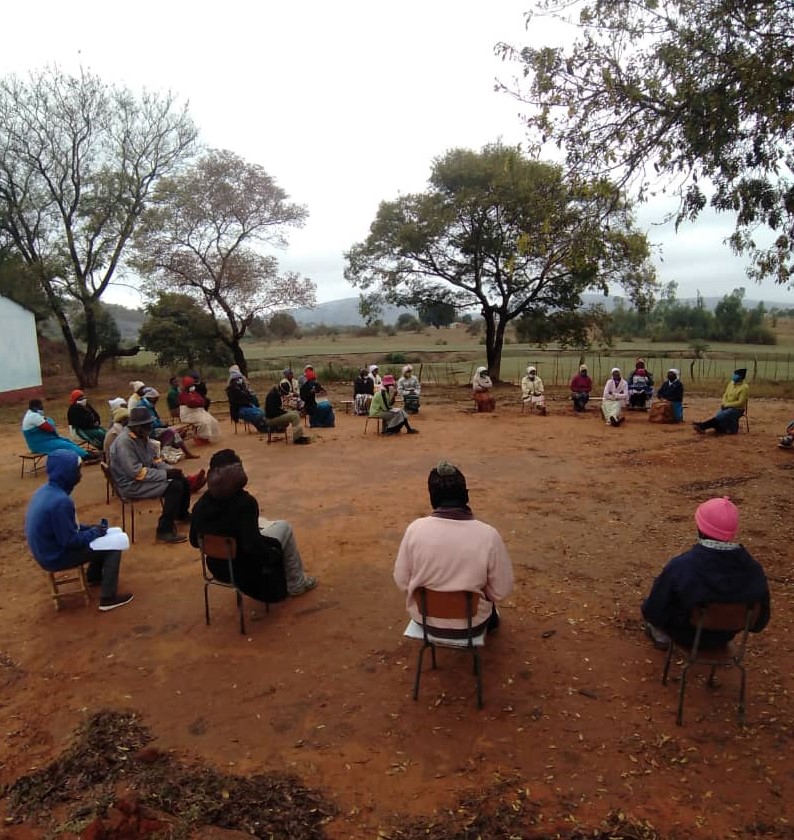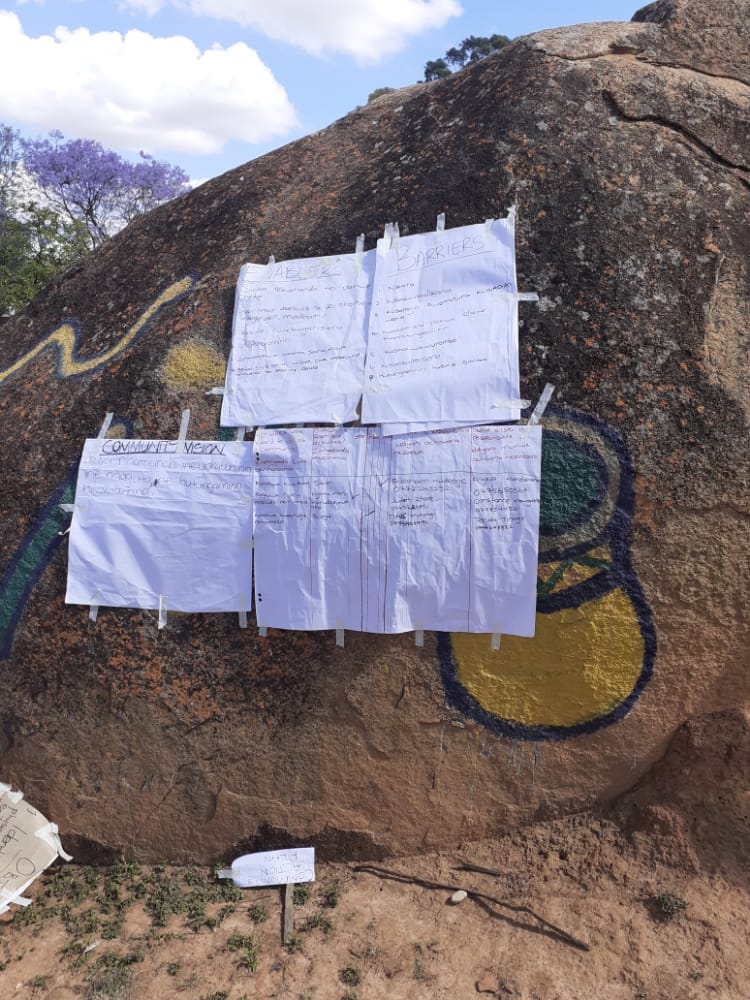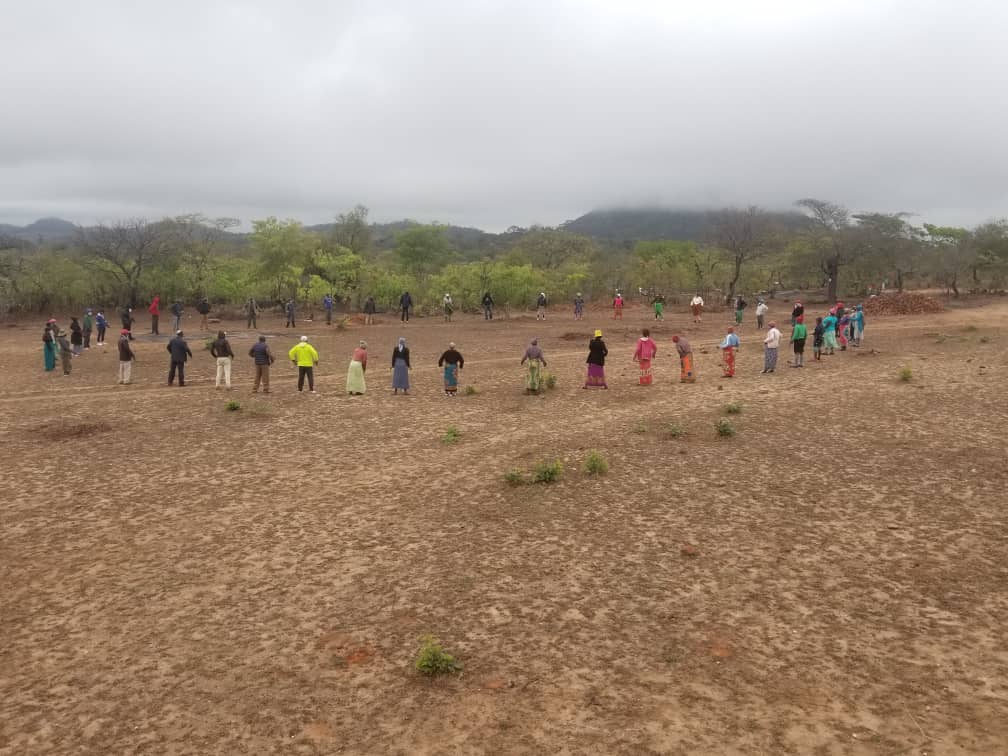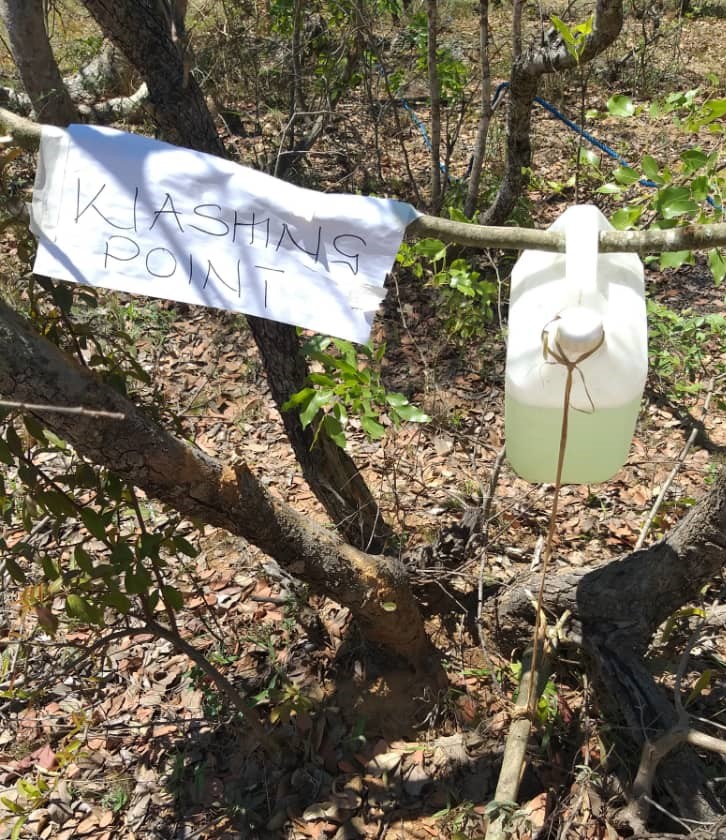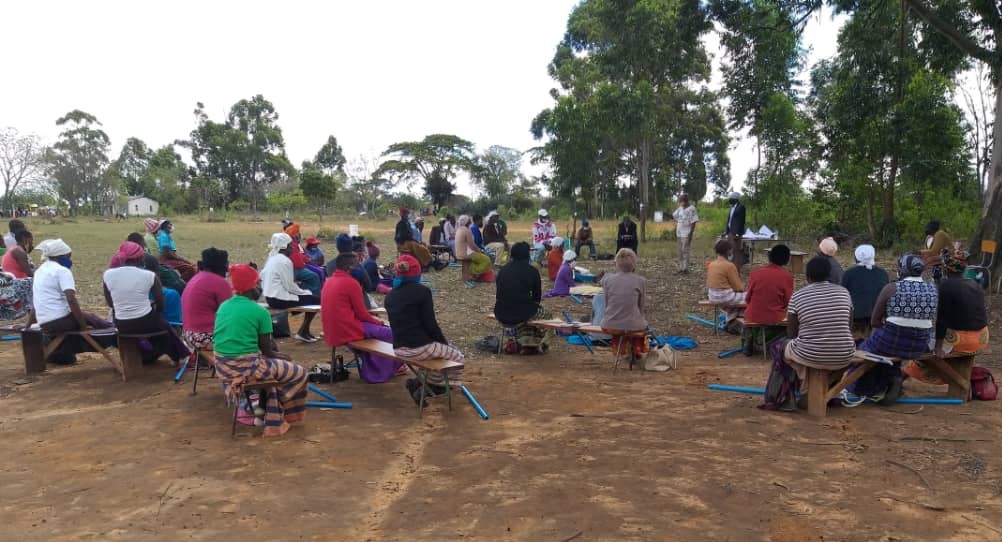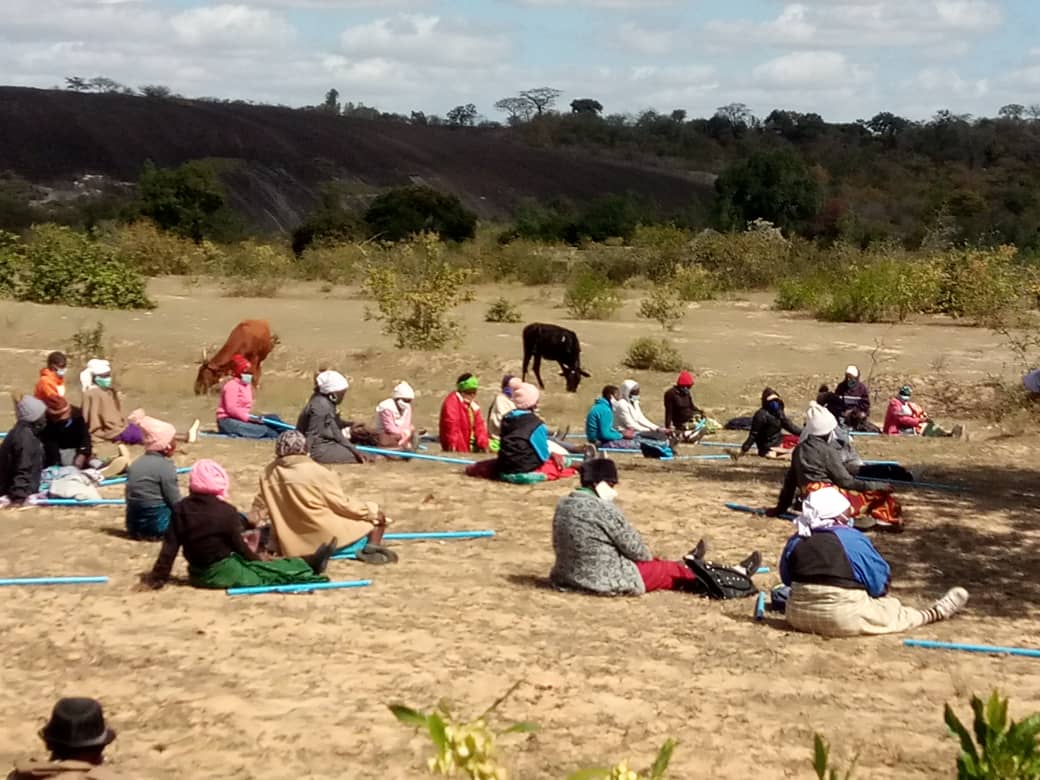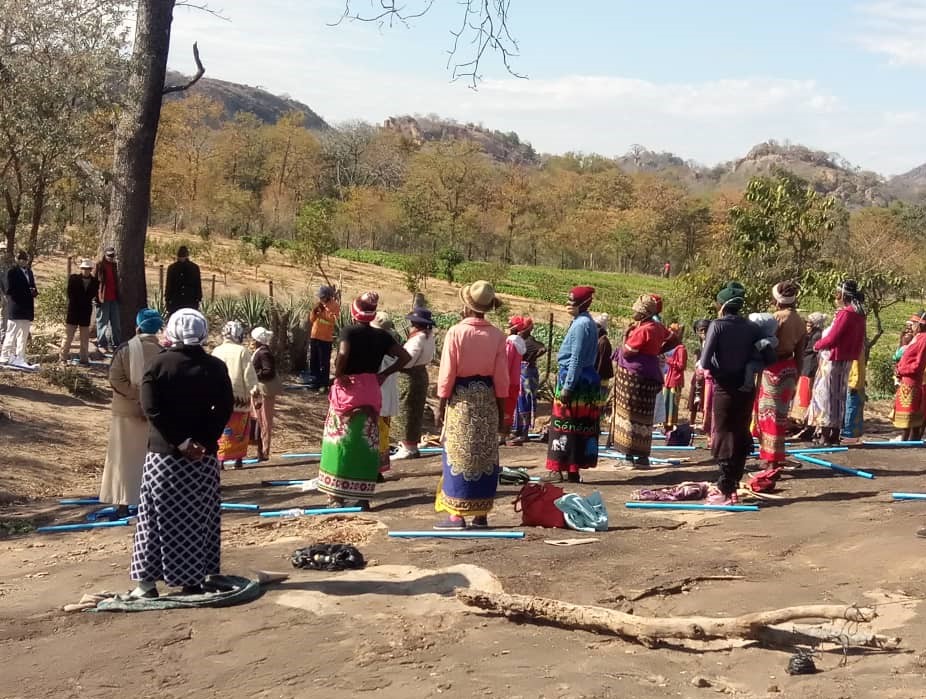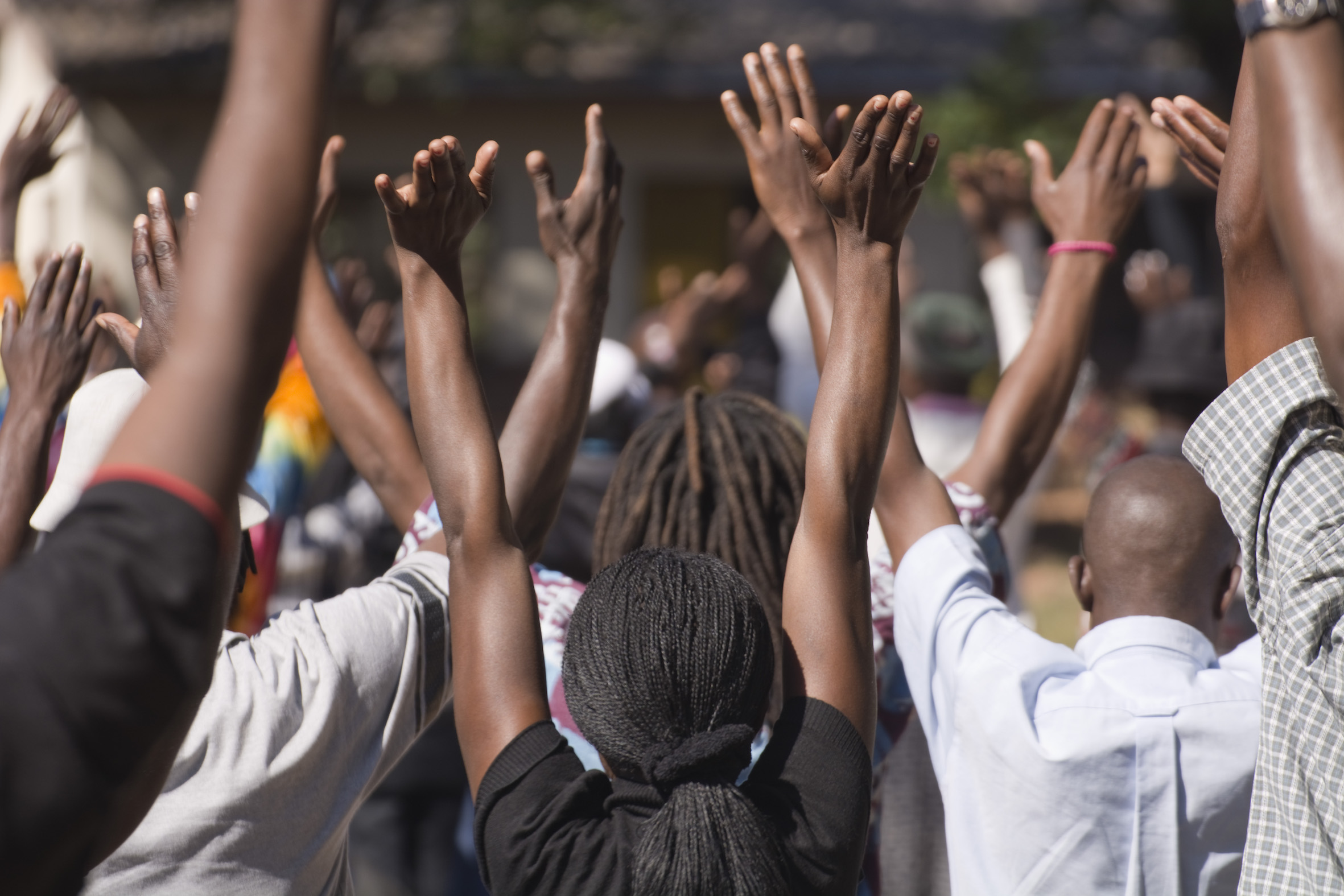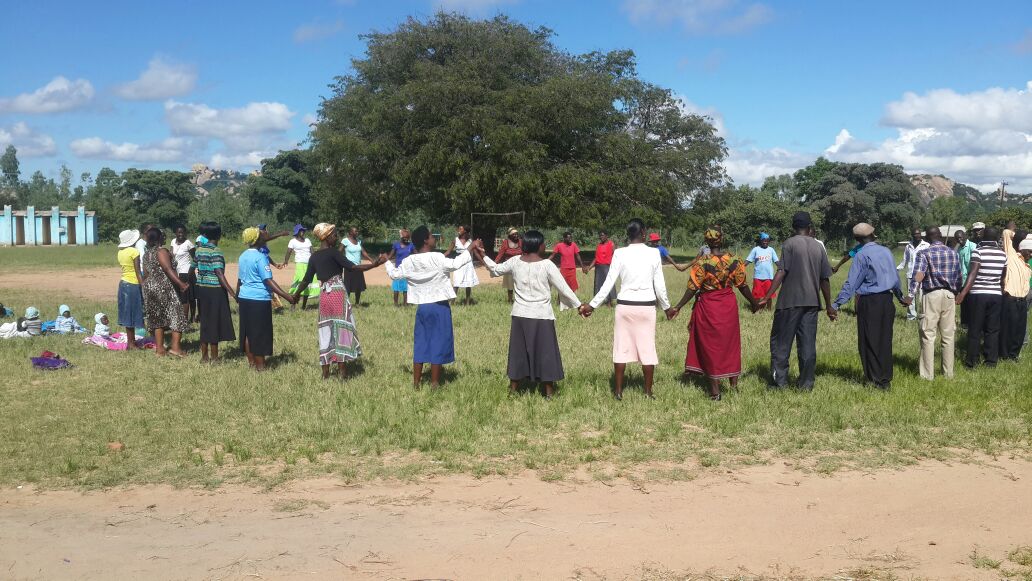According to the World Health Organization, Depression is the world's second greatest killer and as the WHO chief states "There is no health without Mental Health!". Our mental health matters and without mental wellbeing, individuals are unable to properly function at individual, family and community levels. Tree of Life Zimbabwe measures mental health symptoms using the World Health Organization (WHO) SRQ-20. As outlined earlier, the SRQ-20 is a mental health screening instrument developed by WHO, that has been used in many countries of the world including Guinea Bissau, Sudan, Ethiopia, Kenya, and South Africa, and which has also been widely used in Zimbabwe, including those who are trauma survivors.
We selected the SRQ-20 because it screens for a broader range of psychological disorders than measures which focus exclusively on post-traumatic stress disorder (PTSD) and depression. SRQ scores of 7 and above (>6) indicate that clients are in need of clinical support, while scores of 10 and above (>9) are considered to be severe cases.
The data analysis below shares the before and after results of our SRQ-20 assessments.
Graph 1: Average SRQ-20 scores at intake and at follow-up, 2013 – 2018
The graph below shows that on average, clients coming into the trauma healing and empowerment workshops scored a very high 10 or 11 at intake (severe cases needing clinical support). However, upon the 3-month post workshop follow-up, most clients scored a very healthy average of 3 or 4.
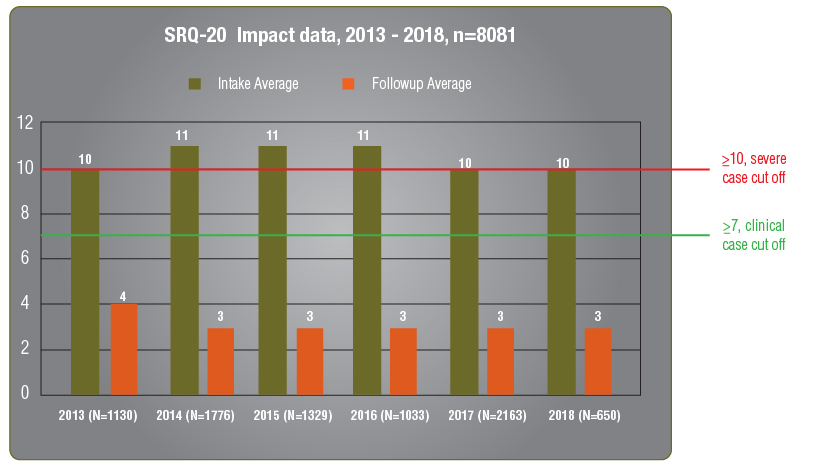
Table 1: Comparison of pre and post clinical cases: 2013 – 2018
The table below compares the average SRQ-20 scores at intake and at follow-up as well as the clinical and severe cases before and after trauma healing workshops, from 2013 to 2018. Initially a very high percentage of clients were either severe or clinical cases, in need of psychological support. However, at follow-up, a much lower percentage of people remained clinical or severe, with most participants recording low SRQ-20 totals, well below cut-off points.

Table 2: SRQ-20 Impact data – 2018
The information tabled below is based on data collected on 804 participants in 2018, being 512 Females (64%) and 292 Males (36%), who were followed up
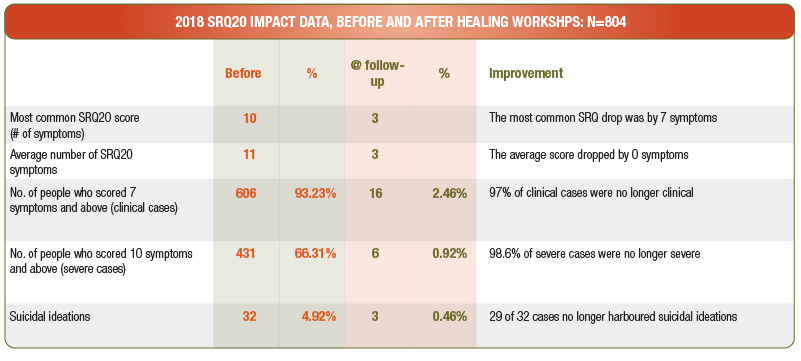
Table 3: SRQ-20 Impact data – 2017
The information tabled below is based on data collected on 1821 participants in 2017, being 1075 Females (59%) and 746 Males (41%) who were followed up.
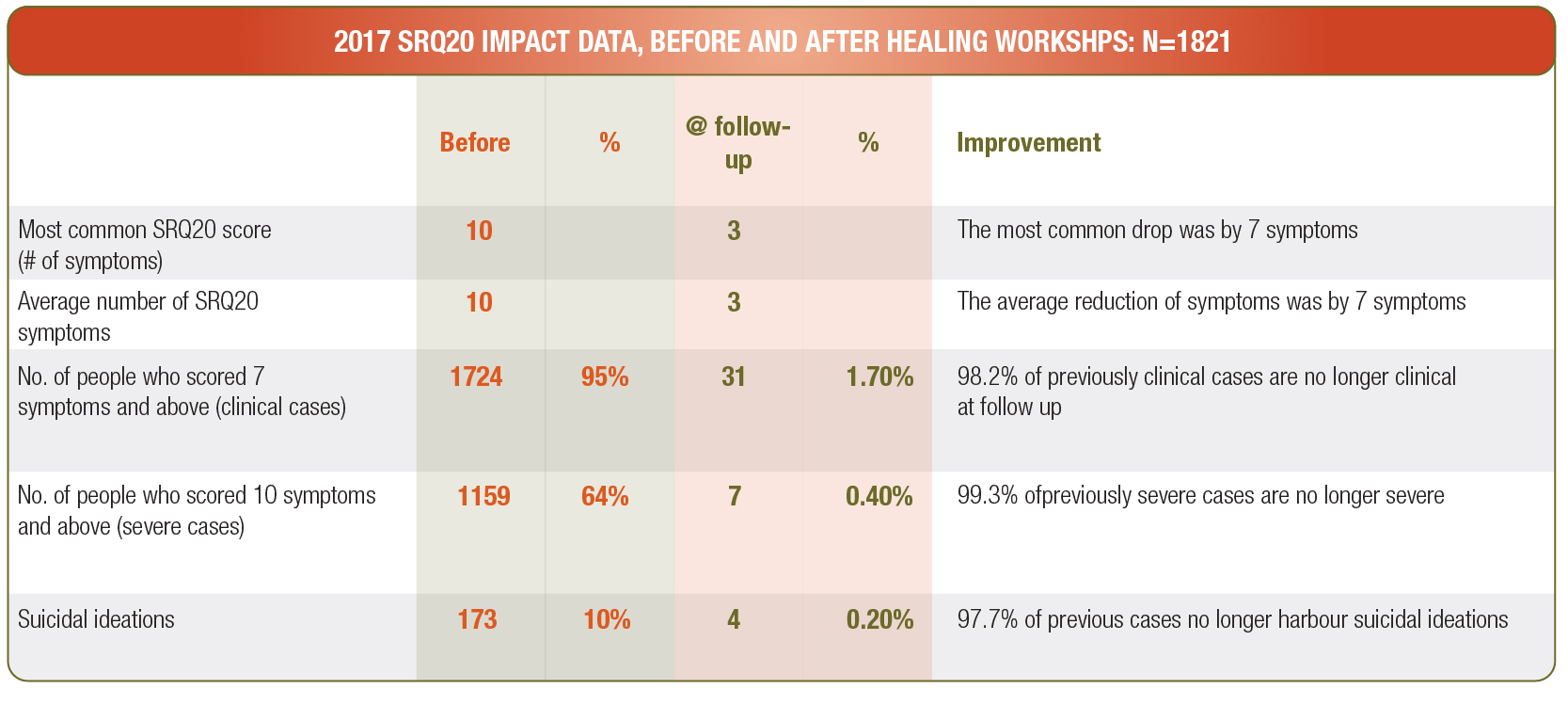
.
Table 4: SRQ-20 Impact data – 2016
The information tabled below is based on data collected on 1033 participants in 2016, being 595 Females (58%) and 438 Males (42%) who were followed up.
.
Table 5: SRQ-20 Impact data – 2015
The information tabled below is based on data collected on 1329 participants in 2015, being 769 Females (58%) and 560 Males (42%) who were followed up.
.
Graph 1: Pre and Post Clinical & Severe Cases and Suicidal Ideations in 2018
The graph below shows the before and after clinical and severe cases in 2018, as well as suicidal ideations.
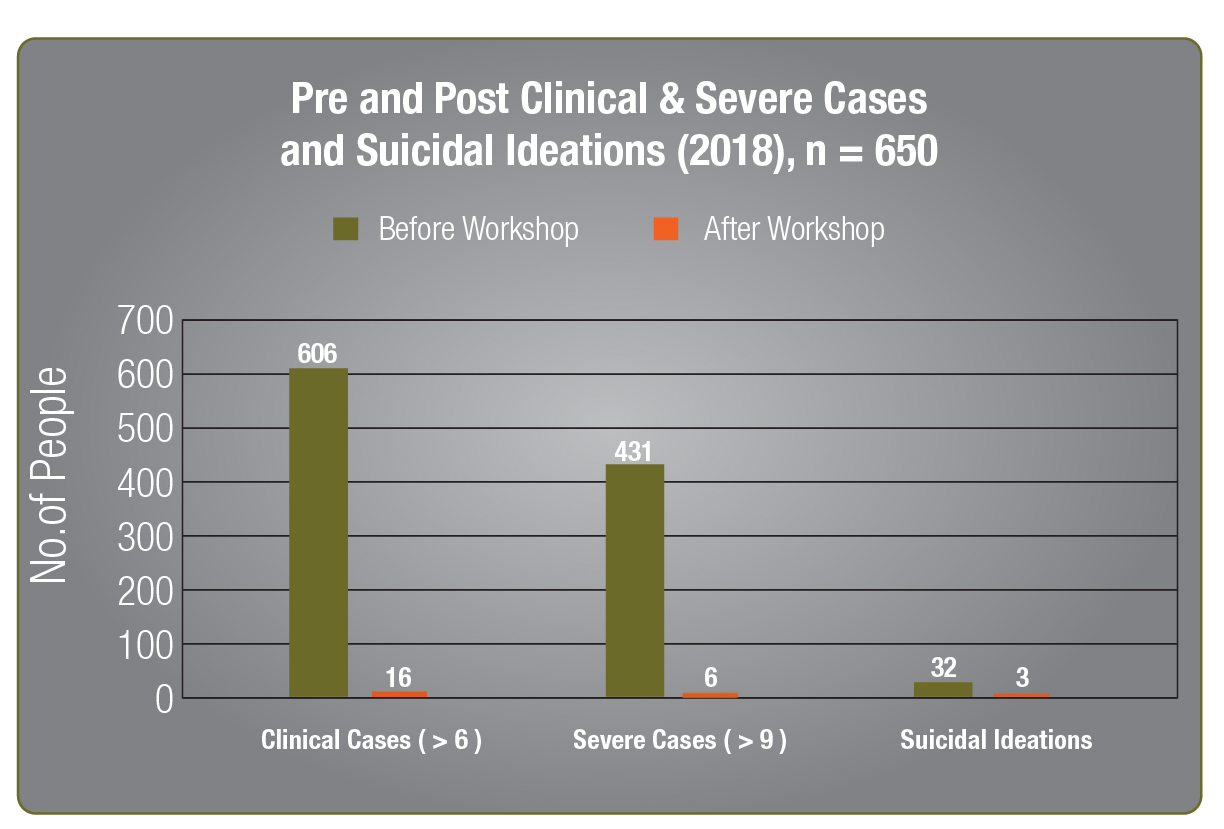
Graph 2: Pre and Post Clinical & Severe Cases and Suicidal Ideations in 2017
The graph below shows the before and after clinical and severe cases in 2017, as well as suicidal ideations.

.
Graph 3: Pre and Post Clinical & Severe Cases and Suicidal Ideations in 2016
The graph below shows the before and after clinical and severe cases in 2016, as well as suicidal ideations.
.
Graph 4: Pre and Post Clinical & Severe Cases and Suicidal Ideations in 2015
The graph below shows the before and after clinical and severe cases in 2015, as well as those with suicidal ideations.












